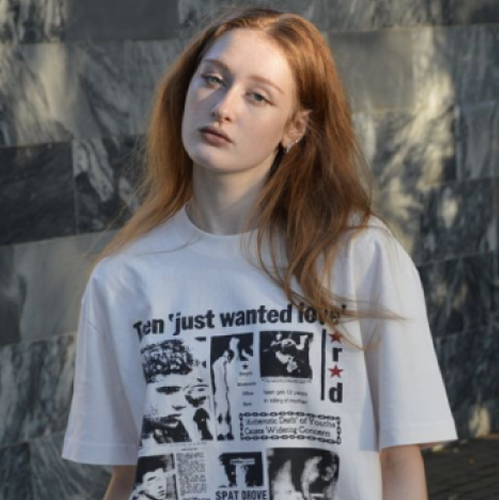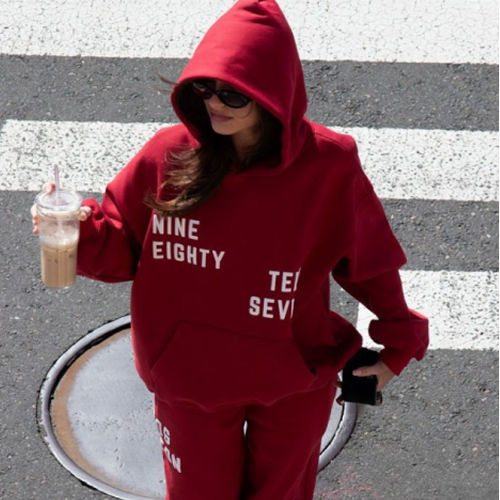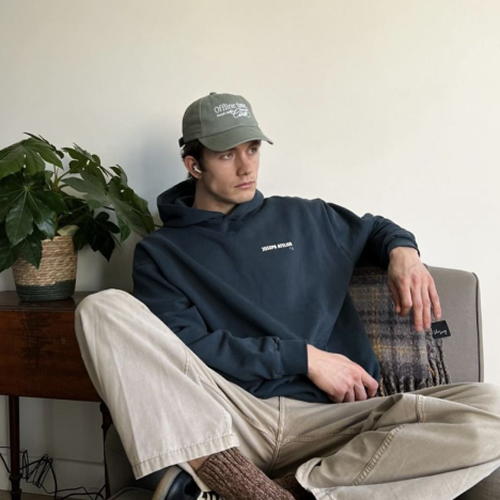I. The Birth of Modern Simplicity
Few garments have shaped global fashion quite like the T-shirt and hoodie. They began as humble essentials — the uniform of laborers, soldiers, and athletes — yet somehow transcended class, culture, and geography to become the global uniform of individuality.
The story starts in the early 20th century. The T-shirt, originally a military undergarment, emerged as a symbol of practicality and rebellion once it appeared on screen — think Marlon Brando in A Streetcar Named Desire. The hoodie, born in the 1930s from cold New York warehouses, would later become synonymous with athleticism and youth freedom through brands like Champion.
Together, they evolved from function to fashion, from anonymity to self-expression.
By the late 20th century, globalization and pop culture transformed these basics into icons — pieces worn across continents regardless of language or background. Whether in Tokyo, Los Angeles, or Paris, you could see the same silhouette: a cotton tee layered under a hoodie, paired with jeans or joggers. The world had found its universal dress code.
II. Cultural Translation: How the Tee and Hoodie Crossed Borders
1. America’s Gift to the World
The United States didn’t just invent streetwear — it exported a mindset.
From 1980s skate culture to 1990s hip-hop, the tee and hoodie became canvases for attitude. American brands like Stüssy, Supreme, and Hanes turned simplicity into identity.
But what truly made these garments global wasn’t the brand — it was the spirit. Freedom, rebellion, authenticity. Those ideas traveled faster than any logo.
2. Asian Reinvention
When the hoodie and tee reached Japan and South Korea, something fascinating happened.
The West’s casual rebellion was reinterpreted with Eastern precision. Brands like A Bathing Ape (BAPE) and Ader Error redefined silhouettes — oversized fits, pop colors, experimental graphics — turning Western basics into avant-garde fashion.
Tokyo streetwear culture elevated what was once “everyday” into “editorial.” In Seoul, pairing a crisp white tee with structured tailoring became a new power move.
In Asia, the hoodie and tee were no longer anti-establishment. They were art.
3. Europe’s Minimalist Dialogue
Meanwhile in Europe, Scandinavian designers stripped everything back.
Labels like Acne Studios, COS, and Arket emphasized clean lines, neutral tones, and perfect proportions.
In their hands, the hoodie and tee became metaphors for restraint — the elegance of understatement.
Paris and Milan, once homes of haute couture, eventually embraced this simplicity too. Quiet fashion was born.
Today, you can walk down a street in Copenhagen, Paris, or London and see how these two garments unify the aesthetic of modern Europe: refined casual.
III. The Global Uniform of Identity
1. Streetwear as Social Currency
In the digital era, fashion became communication.
When you wear a tee with a bold graphic or a hoodie with minimalist branding, you’re telling a story — about what you value, what you follow, what you feel.
Streetwear transformed these everyday pieces into symbols of belonging.
The logo on your chest — be it Nike, Essentials, or a local indie label — is shorthand for your cultural tribe.
It’s not about luxury anymore. It’s about language.
2. The Democratization of Cool
Luxury once meant exclusivity; now it means accessibility done well.
A well-cut tee or hoodie that costs $40 can feel more luxurious than a designer jacket.
Why? Because it fits your life.
The 2020s generation doesn’t chase labels — they chase comfort with confidence.
And nothing embodies that better than the timeless pair of a tee and hoodie.
IV. Regional Interpretations of the Modern Classic
1. The Los Angeles Ease
In LA, the uniform is sun-bleached and effortless — boxy tees, cropped hoodies, vintage denim.
Brands like Fear of God Essentials and John Elliott represent this relaxed sophistication.
The aesthetic is not about perfection — it’s about flow.
Add neutral sneakers, gold jewelry, and messy hair — that’s California confidence.
2. The Tokyo Precision
In Japan, proportion is an art.
Hoodies are worn slightly oversized, tees layered with longline cuts, and colors kept muted.
The focus? Balance.
Tokyo style shows that even the simplest garments can achieve architectural harmony.
3. The Scandinavian Silence
Up north, it’s all about muted palettes — whites, greys, beiges — and perfect tailoring.
A Scandinavian hoodie might look plain, but the craftsmanship speaks volumes.
The effect is minimal yet powerful — “I care, but I don’t need to show it.”
4. The New York Edge
New York is contrast. A black hoodie under a leather jacket. A crisp white tee beneath a blazer.
The energy is dynamic, urban, and raw.
You can go from subway to gallery opening without changing a thing.
That’s the city’s secret: style that moves with you.
V. The Human Connection: Why It Feels So Right
1. Touch and Memory
The fabric of a good tee or hoodie isn’t just comfort — it’s emotion.
Soft cotton against the skin, the faint scent of detergent, the way sleeves bunch at your wrists — these sensations create familiarity.
That’s why these garments often become emotional anchors.
A tour tee from your first concert. A hoodie borrowed from someone you love.
They become archives of your life.
2. The Psychology of Simplicity
Studies in fashion psychology reveal that people feel more authentic and less self-conscious in casual wear.
It’s not laziness — it’s alignment. When you wear something that reflects your internal state, confidence rises naturally.
That’s why the hoodie and tee have become daily armor in an anxious, overstimulated world. They give comfort without compromise.
VI. From Basics to Building Blocks: Styling for the Modern Era
Here’s where practicality meets philosophy — because even the simplest garments can be styled with intention.
1. Everyday Formula
- Men: Boxy white tee + gray hoodie + straight-leg denim + white sneakers = timeless street chic.
- Women: Cropped hoodie + ribbed tank tee + wide-leg trousers + chunky trainers = effortless balance.
- Unisex: Oversized tee + neutral hoodie tied around shoulders + relaxed shorts = easy summer uniform.
Small tweaks in proportion, layering, and accessories turn basics into statements.
2. Elevated Minimalism
Want to elevate? Focus on texture.
A heavy cotton tee under a wool hoodie instantly reads sophisticated.
Add structured outerwear (like a trench or bomber) and minimalist jewelry.
Keep colors earthy or monochrome — simplicity whispers luxury.
VII. Sustainability and the Global Conscious Shift
The world’s relationship with fashion is changing.
As overconsumption rises, people crave meaning again.
T-shirts and hoodies — when done right — represent slow fashion.
They’re timeless, repeatable, durable.
Brands are responding with organic cotton, recycled polyester, and transparent supply chains.
In many ways, this movement is returning to the roots of fashion: utility, honesty, longevity.
VIII. The Unwritten Rule of Global Style
If there’s one rule every country agrees on, it’s this: style starts with comfort.
And comfort begins with the tee and hoodie.
They are the ultimate equalizers — worn by CEOs and students, models and musicians, parents and teenagers.
They don’t need explanation. They just work.



